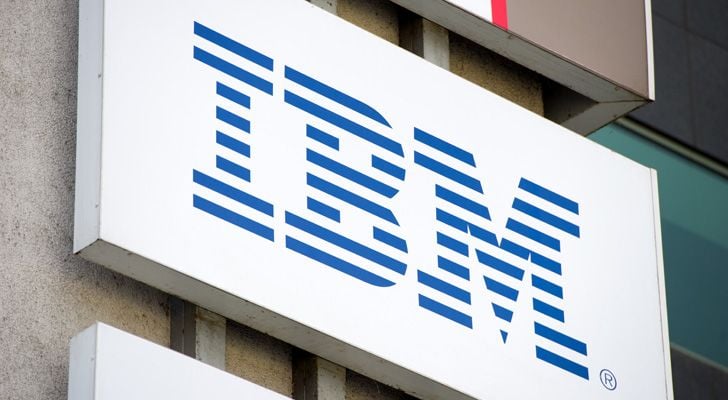It’s truly been an ugly run for IBM (NYSE:IBM). International Business Machines stock has been hammered since early October, falling 25% at one point. IBM stock touched a nine-year low at one point before a modest rebound.
Admittedly, there are some reasons for the pullback. Even though IBM stock looked awfully cheap before the declines, Q3 earnings disappointed, with revenue growth again turning negative after three quarters of increases.
At the end of October, IBM agreed to acquire Red Hat (NYSE:RHT) for $34 billion in cash, an acquisition the market appears to dislike.
Overall weakness in tech stocks likely added to the pressure. Mature, low-growth tech plays like Cisco Systems (NASDAQ:CSCO) and Oracle Corporation (NYSE:ORCL) have pulled back as well. Neither stock, of course, has seen declines like that of International Business Machines stock.
IBM’s performance admittedly has been disappointing. I argued as recently as August that IBM looked like a buy, writing that “I’d be stunned” to see IBM trade lower than $125, at which point it would offer a 5%+ dividend yield.
IBM is below $125, and I am a bit stunned. And I think the sell-off in IBM stock has gone too far.
Is IBM a Value Trap, or a Value Play?
Fundamentally, IBM is cheap. It trades at less than 9x consensus 2019 EPS estimates. Free cash flow guidance for this year suggests a similar multiple based on free cash flow.
With IBM management guiding for Red Hat to be accretive to the ~$12 billion FCF figure, that multiple should fall even further next year. And it leaves ample room for IBM to pay out its current ~$6 billion in dividends.
So the fundamental argument here seems reasonably easy to make. Red Hat itself adds roughly two points of revenue growth a year, helping to stabilize the business going forward. IBM stock is priced for a decline in terms of both earnings and free cash flow.
The dividend should be reasonably safe; there doesn’t seem room for a situation like that of General Electric (NYSE:GE) where onerous debt leads to a dividend cut. Even with the Red Hat deal, IBM’s debt (and pension) load remains manageable.
But that fundamental case itself highlights the potential risk here. The market in general, and this market specifically, isn’t leaving quality companies sitting around with a 9x P/E and a 5%+ dividend yield, even after some recent weakness. IBM stock didn’t hit a nine-year low because the market wasn’t paying attention. The market was.
The Risks to IBM Stock
The fundamentals here suggest that investors are pricing International Business Machines as if it were a declining business. Looking backward, it is. Revenue fell year-over-year for 23 consecutive quarters before last year’s Q4. Operating margins have compressed over that period.
And so the easiest bear case for IBM at the moment is based on a single question: even with Red Hat, what’s different? The argument for buying IBM going back to 2012 has been, essentially, that the stock is too cheap if it can stabilize revenue and margins. That bull case has been correct, but IBM hasn’t been able to achieve that stabilization.
Even the good news of the last few quarters doesn’t look necessarily that good. IBM’s targeted areas of growth (which it refers to as “strategic imperatives”), like cloud and AI, have increased revenue 13% over the past year. Those categories drive roughly half of sales, which is good news.
The bad news is that IBM on the whole has grown revenue a little over 2%. That in turn suggests the rest of IBM is seeing revenue fall something like 8%. And the modest margin pressure on the business shows that IBM is moving from better sales to weaker sales. It’s trying to catch up in cloud while seeing its mainframe business, for instance, wither away.
And on that front, Q3 really was disappointing. Cognitive Solutions (which houses the well-known Watson) revenue declined in constant currency for the second straight quarter. Systems growth of 1% was a notable deceleration. The Q3 report hurt the case here. And with tougher comparisons on the way for the next three quarters, investors probably can’t expect too much in the way of fireworks any time soon.
Still Intriguing
So IBM bulls have to have their eyes open to the potential downside. That said, $121 does look too cheap for IBM stock. The Red Hat deal might have been too pricy, but I agree with Luke Lango, who made a forceful case for the strategic value of the acquisition. And with IBM having lost about $30 billion in market cap since early October, IBM stock has more than priced in the price tag.
The dividend looks safe in the mid-term. The balance sheet is safe. And 8-9x earnings and free cash flow gives the company a lot of flexibility to either pay off the Red Hat-related debt or ramp up shareholder returns.
More important, those multiples do change the bull case here somewhat. The argument for the last few years was that if IBM stabilized, the stock would go up. At these levels, if IBM stabilizes, the stock can soar.
Something like 13x $13 in 2019 EPS gets the stock to ~$170 – about 40% upside even before the dividend. The market now is pricing in the recent trend which makes some sense. But that also means investors aren’t accounting for what happens if the Red Hat deal was a good one and IBM’s turnaround finally takes hold.
As of this writing, Vince Martin has no positions in any securities mentioned.

